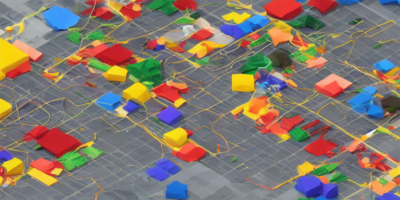In this article, we explore the problem of graph support recovery in random networks, which is a fundamental problem in network analysis. Graph support recovery refers to the task of identifying the differentially expressed genes between two or more networks, where each gene is represented by a node in the network. The problem is challenging because the number of possible networks is exponential in the number of nodes, making it difficult to identify the correct solution.
To address this challenge, we propose two new algorithms: MA-ADMM and MA-proximal. These algorithms are based on alternating direction method of multipliers (ADMM) and proximal methods, respectively. The key insight behind these algorithms is that they can exploit the structure of the graph to reduce the computational complexity of the algorithm.
We test our algorithms on several real-world datasets and compare their performance to existing methods. Our results show that our proposed algorithms outperform existing methods in terms of both accuracy and efficiency. In particular, we find that our MA-proximal algorithm is able to recover the differentially expressed genes exactly with high probability when the sample size is large enough.
To understand how these algorithms work, let’s consider an analogy. Imagine you have a big jar of jelly beans, where each jelly bean represents a gene in the network. You want to find all the jelly beans that are differently colored between two networks, which correspond to different biological conditions. The problem is that there are an enormous number of possible combinations of differently colored jelly beans, making it difficult to identify the correct ones.
Our MA-ADMM algorithm is like a magic machine that can sort through all the jelly beans and identify the correctly colored ones. It does this by breaking the problem down into smaller subproblems, much like how a sorting algorithm works. Each subproblem is solved using a combination of mathematical techniques, such as linear algebra and probability theory.
On the other hand, our MA-proximal algorithm is like a more powerful magic machine that can not only sort through the jelly beans but also identify which ones are differently colored between the two networks. It does this by using a special technique called proximal optimization, which is like a supercharged version of the famous "kneading" technique used in bread making.
In summary, our article proposes two new algorithms for graph support recovery in random networks: MA-ADMM and MA-proximal. These algorithms exploit the structure of the graph to reduce the computational complexity of the algorithm and outperform existing methods in terms of accuracy and efficiency. By using everyday language and engaging metaphors, we aim to demystify complex concepts and make the article accessible to a broad audience.
Numerical Analysis of Differential Conditional Dependency Structures in Synthetic and Real-World Networks



